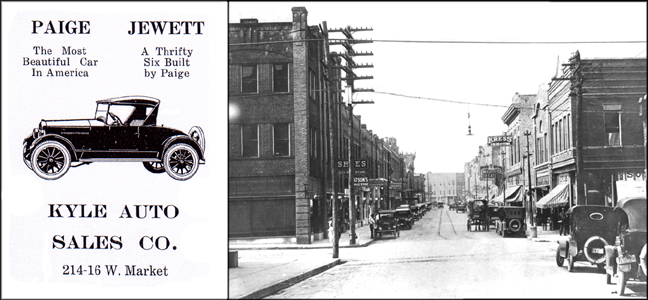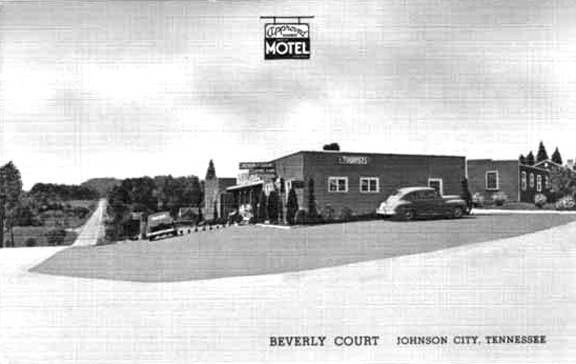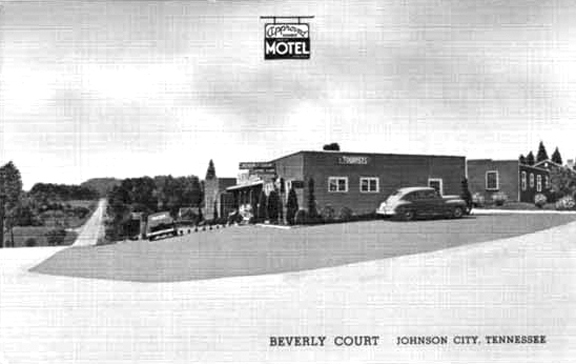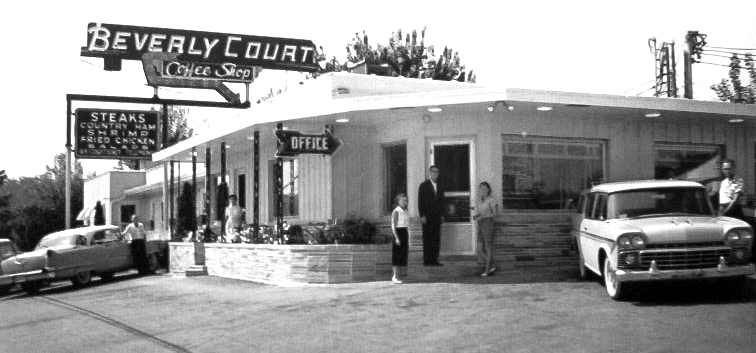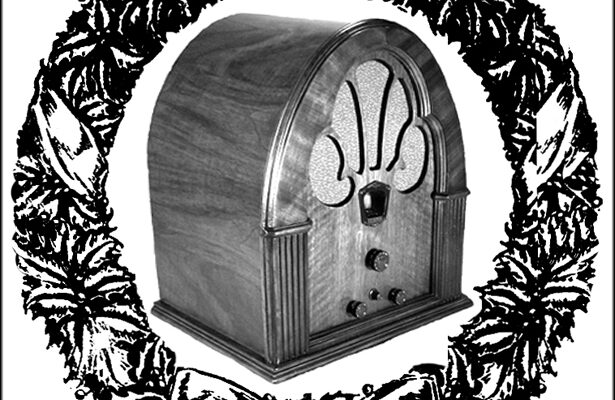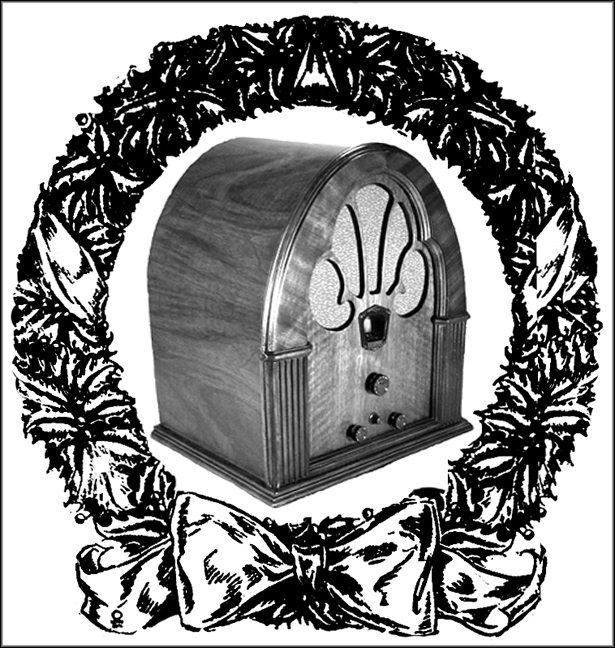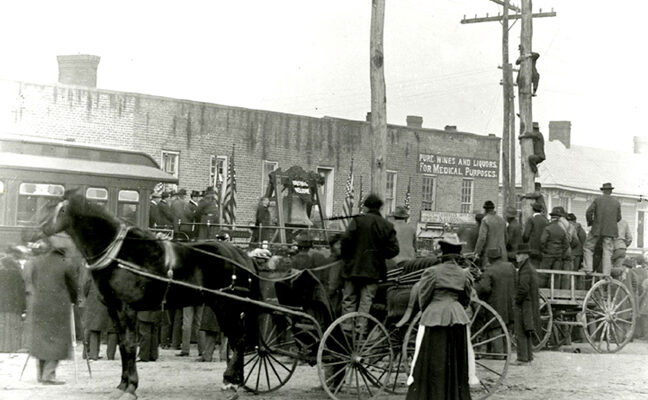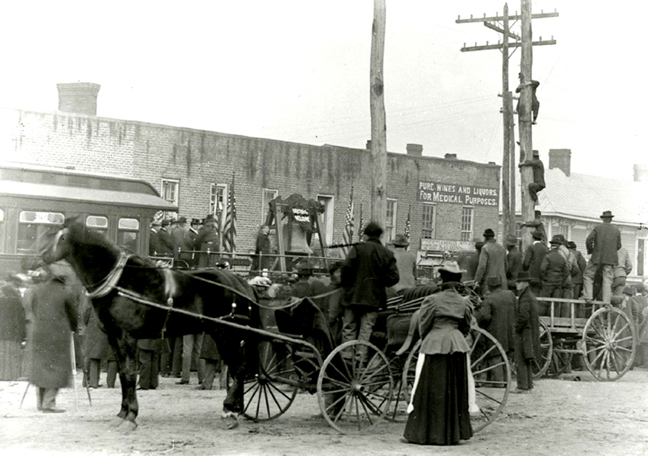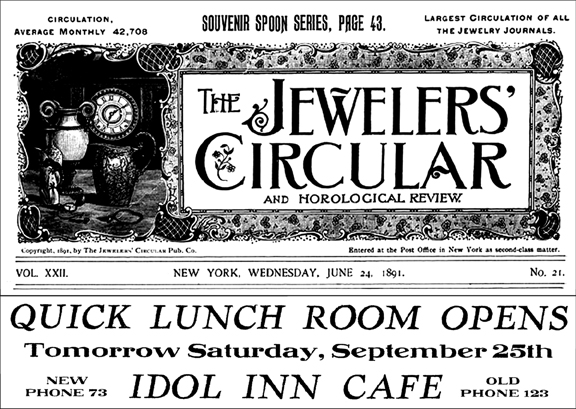Today, let’s crank up the Yesteryear Time Machine and drift back to the “good old days” of December 26, 1922 to drive along Johnson City’s streets when its population was about 15,000. When we arrive, we find the temperature to be in the upper 20s with just a hint of snow flurries. For the most part, the main streets are paved within the confines of the city limits.
We make a decision to drive east through downtown from the west end of W. Main to the east side of E. Main and return by way of Market. We are riding in a new Paige Jewett roadster that was purchased for $1,065 from Kyle Auto Sales at 214-16 W. Market. The vehicle has a powerful 249 cubic inch six cylinder engine.
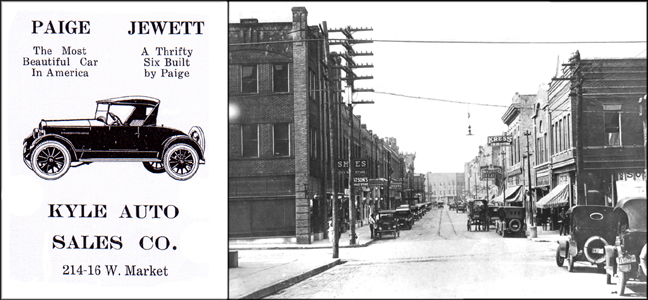
As we motor along, we observe a variety of cars, trucks, horses (with and without buggies), electric-driven trolleys, bicycles, motorcycles, trains and pedestrians traveling by Shank’s mare (walking). We are surprised to learn that 20 miles-per-hour is the maximum speed limit in town. Mayor Ellison and his board recently approved a list of traffic ordinances.
Heading east, we cross Delaware, Fall and Winter streets until we approach Watauga where we observe the big square shaped brick West Side School on a small hill to our right. We must slow down to 12 mph during school hours. Since school is not in session, we can resume our speed.
As we approach Boone, we notice City Hall on our left and the new Arcade Building under construction at 137-38 Main. We draw near the train tracks where we encounter a flashing signal light warning us that a train is approaching. As we wait, we gaze at the Windsor Hotel and Annex on our right that contains T.H. Dyer’s Barber Shop and the Windsor Billiard Parlor. Trains are restricted to 15 mph in the downtown area between Division and Sevier streets and are forbidden to block street crossings for more than four minutes at a time. That sounds impossible.
After the train moves on, we reduce our speed to 12 mph until we reach Roan because of safety concerns in an area that has the heaviest vehicular and pedestrian traffic in the city. To our right is Fountain Square with the gorgeous Lady of the Fountain statue smiling at us. We smile back.
We drive past Roan and speed up to 20 mph, but as we approach Fire Station #2 on our left at 343 E. Main, we must reduce our speed to 15 mph. The same applies for those driving past Fire Station #1 (headquarters) at 218 W. Market. The fire crews have the right-of-way during emergencies. Continuing on Main, we observe the Franklin Apartments (formerly Carlisle Hotel) on our right at Division.
We come to the end of E. Main and cross over to E. Market and travel west toward where we began. While we are slowly driving back, let me share some additional traffic regulations. Vehicle lights have to be visible at a distance of 200 feet. A speed limit of 12 mph shall apply at street intersections and while turning corners. At viaducts, underpasses and bridges, the speed is 10 mph. An 8 mph limit shall apply to trucks at the same locations.
If a horse becomes cantankerous on the road, the animal’s owner can lawfully signal for traffic to stop until tranquility is restored. No horse can be parked within 100 feet of a drug store or where food is sold. Pedestrians may cross streets but only at designated crosswalks provided they do so at right angles. A motorist may be arrested if smoke is emitting from his car.
Vehicles operated between ten p.m. and six a.m. must be equipped with silencer apparatus. Horns must only be used as a danger warning. Cars and other vehicles are not allowed to hinder pedestrians at street intersections. An automobile may not be parked all night on a public street. All vehicles must strictly yield to streetcars.
As we arrive back for our Time Machine return voyage, we are ready to leave 1922 and return to the “good old days” of 2011. I sure hate to leave that Paige Jewett roadster behind.
